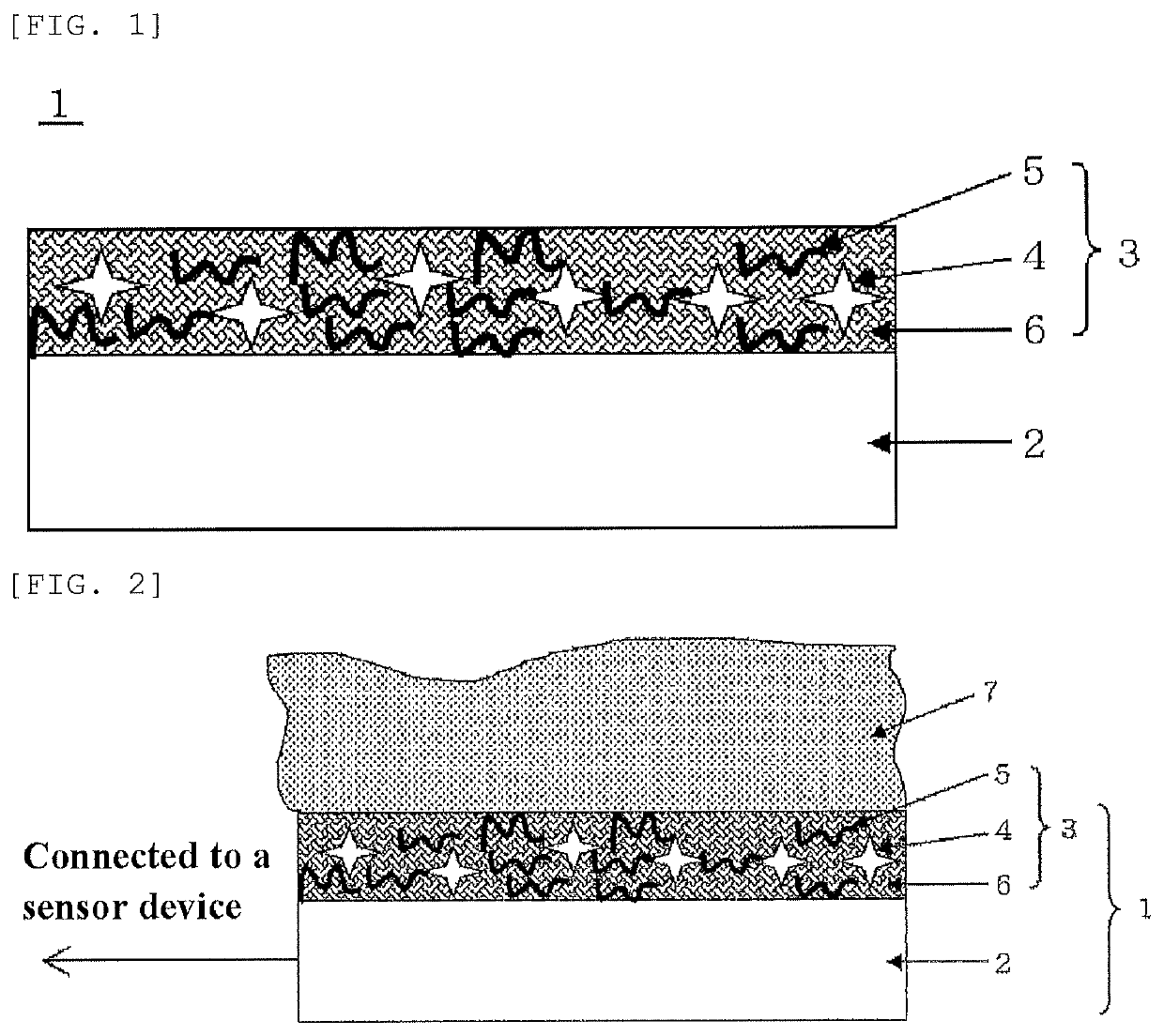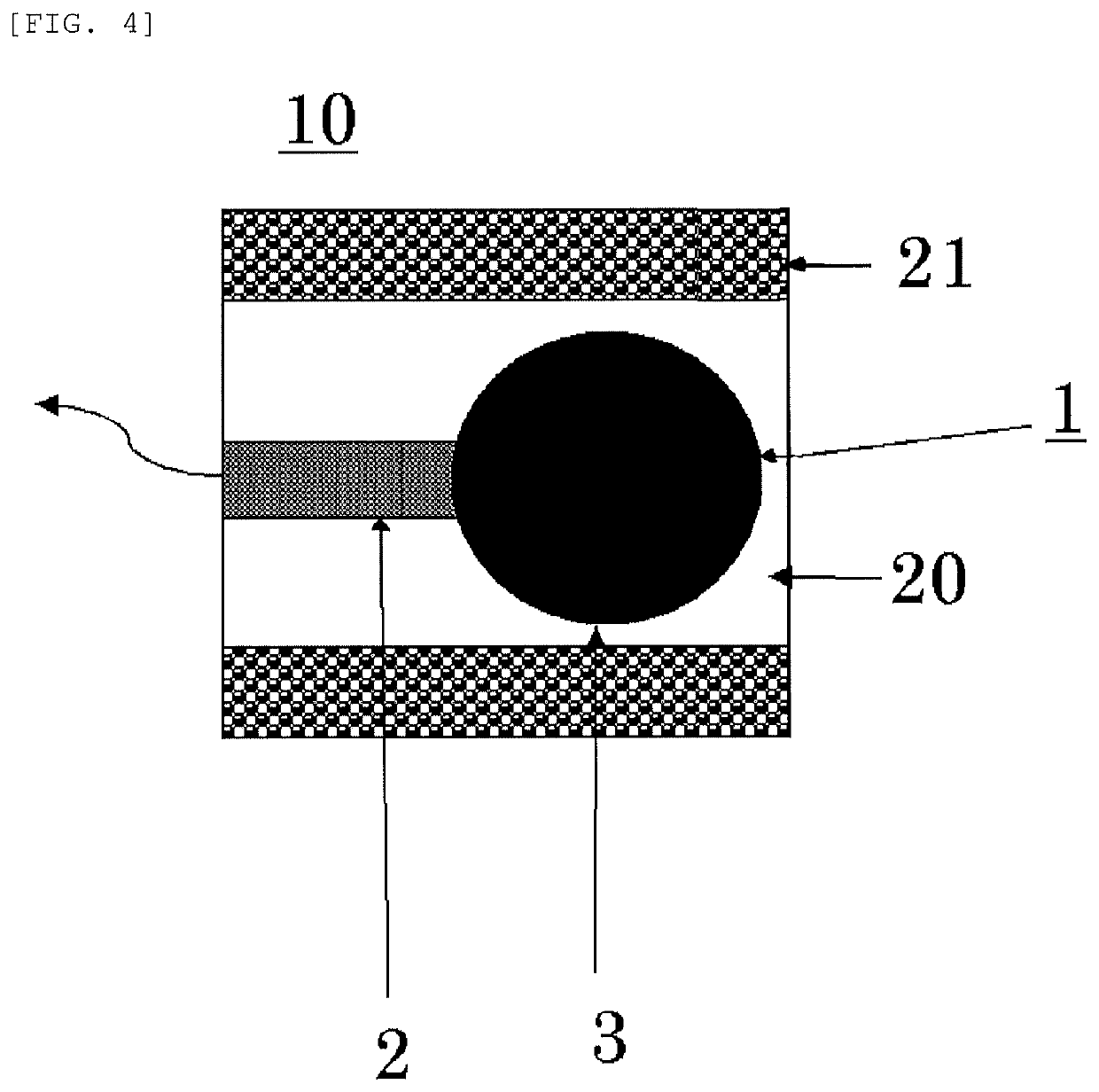Bio-electrode composition, bio-electrode, method for manufacturing bio-electrode, polymer compound, and composite
a bioelectrode and composition technology, applied in the direction of conductive layers on insulating supports, diagnostic recording/measuring, applications, etc., can solve the problems of loss of electric conductivity, user skin allergy, skin allergy, etc., and achieve excellent electric conductivity, efficient conducting electric signals, and excellent biocompatibility
- Summary
- Abstract
- Description
- Claims
- Application Information
AI Technical Summary
Benefits of technology
Problems solved by technology
Method used
Image
Examples
example
[0216]Hereinafter, the present invention will be specifically described with reference to Examples and Comparative Examples, but the present invention is not limited thereto. Incidentally, “Me” represents a methyl group, and “Vi” represents a vinyl group.
(Ionic Polymer)
[0217]Ionic polymers 1 to 14, which were blended as ionic material (conductive material) to bio-electrode composition solutions, were synthesized as follows. First, 30 mass % solutions of corresponding monomers in cyclopentanone were introduced into a reaction vessel and mixed. The reaction vessel was cooled to −70° C. under a nitrogen atmosphere, and subjected to vacuum degassing and nitrogen blowing, which were repeated three times. After raising the temperature to room temperature, azobisisobutyronitrile (AIBN) was added thereto as a polymerization initiator in an amount of 0.02 moles per 1 mole of the whole monomers. This was warmed to 60° C. and then allowed to react for 15 hours. After drying the solvent, the co...
examples 1 to 29
, Comparative Examples 1 to 4
[0252]According to the compositions shown in Tables 1 to 3, the ionic polymer-composite particles, resins, ionic polymer, organic solvents, and additives (radical generator, platinum catalyst, electric conductivity improver, etc.) were blended to prepare bio-electrode composition solutions (Bio-electrode composition solutions 1 to 29, Comparative bio-electrode composition solutions 1 to 4).
TABLE 1Bio-electrodeParticleBlend ioniccompositionmaterialResinpolymerOrganic solventAdditivesolution(parts by mass)(parts by mass)(parts by mass)(parts by mass)(parts by mass)Bio-electrodeIonic polymer 1-Siloxane compound 1 (40) —ISOPAR G (60)CAT-PL-50T (0.7)compositioncomposite silicaSiloxane compound 2 (100)cyclopentanone (70)lithium titanatesolution 1(20)Siloxane compound 4 (3) silver flake (8)powder (12)Bio-electrodeIonic polymer 2-Siloxane compound 3 (126)—n-octane (40)CAT-PL-50T (1.5)compositioncomposite silicaSiloxane compound 4 (3) n-decane (20)carbon black (5...
PUM
| Property | Measurement | Unit |
|---|---|---|
| diameters | aaaaa | aaaaa |
| temperature | aaaaa | aaaaa |
| median diameter | aaaaa | aaaaa |
Abstract
Description
Claims
Application Information
 Login to View More
Login to View More - R&D
- Intellectual Property
- Life Sciences
- Materials
- Tech Scout
- Unparalleled Data Quality
- Higher Quality Content
- 60% Fewer Hallucinations
Browse by: Latest US Patents, China's latest patents, Technical Efficacy Thesaurus, Application Domain, Technology Topic, Popular Technical Reports.
© 2025 PatSnap. All rights reserved.Legal|Privacy policy|Modern Slavery Act Transparency Statement|Sitemap|About US| Contact US: help@patsnap.com



